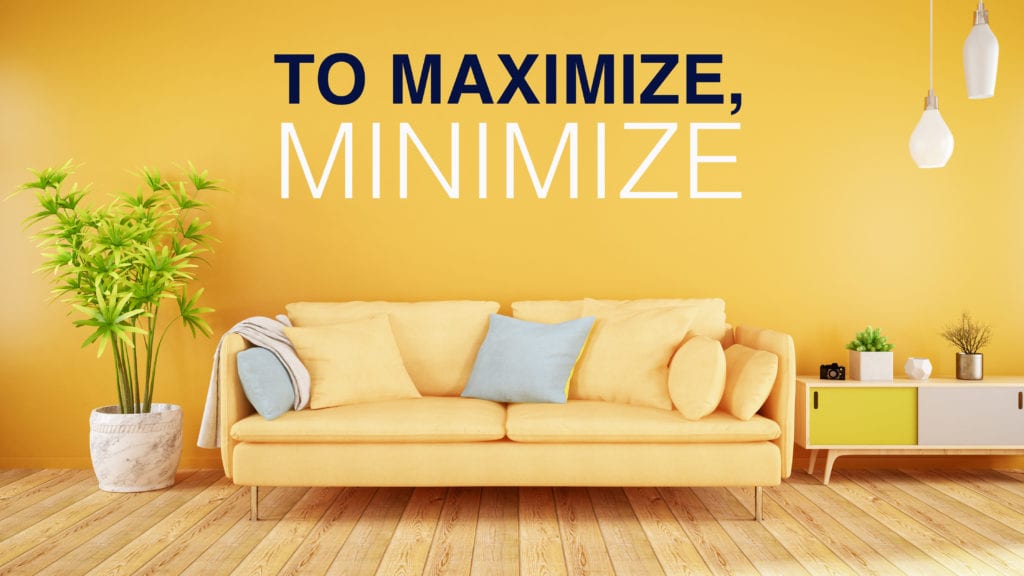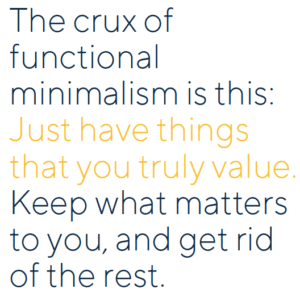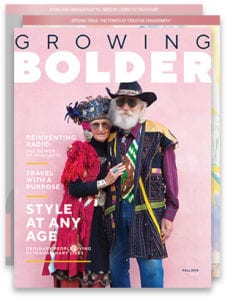
More is better. It’s a philosophy that we’ve all grown up with and have learned to accept. More stylish clothing, more expensive cars, more exotic trips.
But as we age, it becomes apparent that more is often worse. More trips to the buffet leave us heavier and less healthy. Materialism—the accumulation of stuff—is ultimately unfulfilling and is a trigger for a variety of stresses.
We love to save. We’re inherently collectors. By the time we get to midlife or beyond, our homes are so jam-packed with things we don’t need that just thinking about what to do with it all can be overwhelming.
In fact, that’s one of the most-cited reasons empty nesters hesitate to move. It’s just too much work.
But living in an environment of clutter has detrimental effects. Clutter creates stress, can be socially isolating and can make it difficult to get things done.
This has resulted in the growth of a lifestyle philosophy called “functional minimalism,” which requires that you take a more mindful approach to the things you save and the things you buy.
The crux of functional minimalism is this: Just have things that you truly value. Keep what matters to you, and get rid of the rest.

Ciji Ware, a New York Times and USA Today bestselling author, broadcaster, speaker and journalist, understands how liberating it can be to cut through the clutter.
She refers to herself as a recovering clutterbug, and her book, Rightsizing Your Life, offers tips on how to overcome the emotional attachments that can often stop the decluttering process in its tracks.
“There are many reasons why we hang on to so much stuff,” she says. “But what we need to understand is how good it can feel to unload the burden of dealing with so many unnecessary things.”
Ware believes clutter weighs us down, like a ball and chain. Going through our closets, drawers and garages and disposing of the excess offers the same benefits as going on a successful diet. We feel better, have more energy and a brighter outlook.
Although it may sound easy enough to do, in fact it isn’t. It can be overwhelming just figuring out where to begin. Ware recommends choosing an area that bothers you the most.
Are your dresser drawers so full that they’re difficult to open? Does your car sit in the driveway because the garage is full of stuff?
Once you choose an area, you need to be prepared to make some tough decisions. Ware says one way to stay on track and keep the process moving is to have two containers: one for trash, and another for items you’d like to consider further.
That way, instead of agonizing over whether to keep it or toss it, you can relegate it to the “not sure” pile and keep charging forward. The crux of functional minimalism is this: Just have things that you truly value. Keep what matters to you, and get rid of the rest.
Ware says clothes closets are the most difficult areas to declutter. She recommends inviting a friend over to go through them with you. Lean on your friend for objective opinions on what you should get rid of.
Rightsizing or minimizing isn’t just about deciding what to throw out. It’s about adopting a different way of looking at your lifestyle. It requires that you purposely decide what’s worth having, and why something is worth keeping.
It’s about asking yourself, what do I really need to be happy?
We probably should have realized long ago that what we were taught was wrong. More is not better. Having more simply does not lead to happiness or fulfillment.
But having less can.

This article originally appeared in Growing Bolder Magazine. For more great stories like this, click here to subscribe to the digital or print editions of Growing Bolder Magazine. All past issues of GB Magazine, including the one that features this article, are also available to read online exclusively on the GB Portal. Click here to find out how to become a member!














